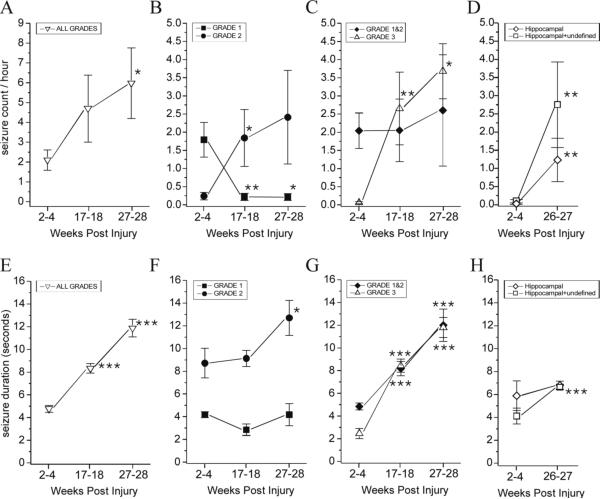Figure 5. Temporal evolution of rate of occurrence and duration of cortical and hippocampal discharge.
Cortical and hippocampal discharge rate of occurrence (A-D) and duration (E-H) are shown from 2 to 28 weeks post-injury. Cortical discharge occurring during all seizure grades (1, 2, and 3) increased in frequency over time (A). Grade 1 seizures decreased, while grade 2 seizures increased in frequency over time (B). The rate of seizures originating from the frontal-parietal neocortex (grade 1 and 2 combined) did not change from 2−4 weeks to 27−28 weeks post-injury, while the rate of seizures not originating from that focus (grade 3) dramatically increased over time post-injury (C). The frequency of hippocampal seizures increased over time post-injury. Because seizures detected simultaneously in both hippocampus and cortex may also be originating from the hippocampus, the frequency of hippocampal+undefined seizures is shown (D). Cortical discharge duration (all seizure grades) increased over time post-injury (E). The duration of grade 1 seizures did not significantly increase over time, while grade 2 seizures did (F). The duration of seizures originating from the frontal-parietal focus (grades 1 and 2) increased, as did the duration of grade 3 seizures that do not originate from it (G). We did not detect a significant increase over time post-injury in the duration of hippocampal discharge during hippocampal seizures. However, the duration of hippocampal+undefined seizures significantly increased over time post-injury (H). Data are presented as mean±SEM. Statistical comparisons were performed with Wilcoxon Signed Rank test (A-C) and With Mann-Whitney U test (D-H) vs 2−4 wks time point (* p<0.05; ** P≤0.01; *** P≤0.001).

